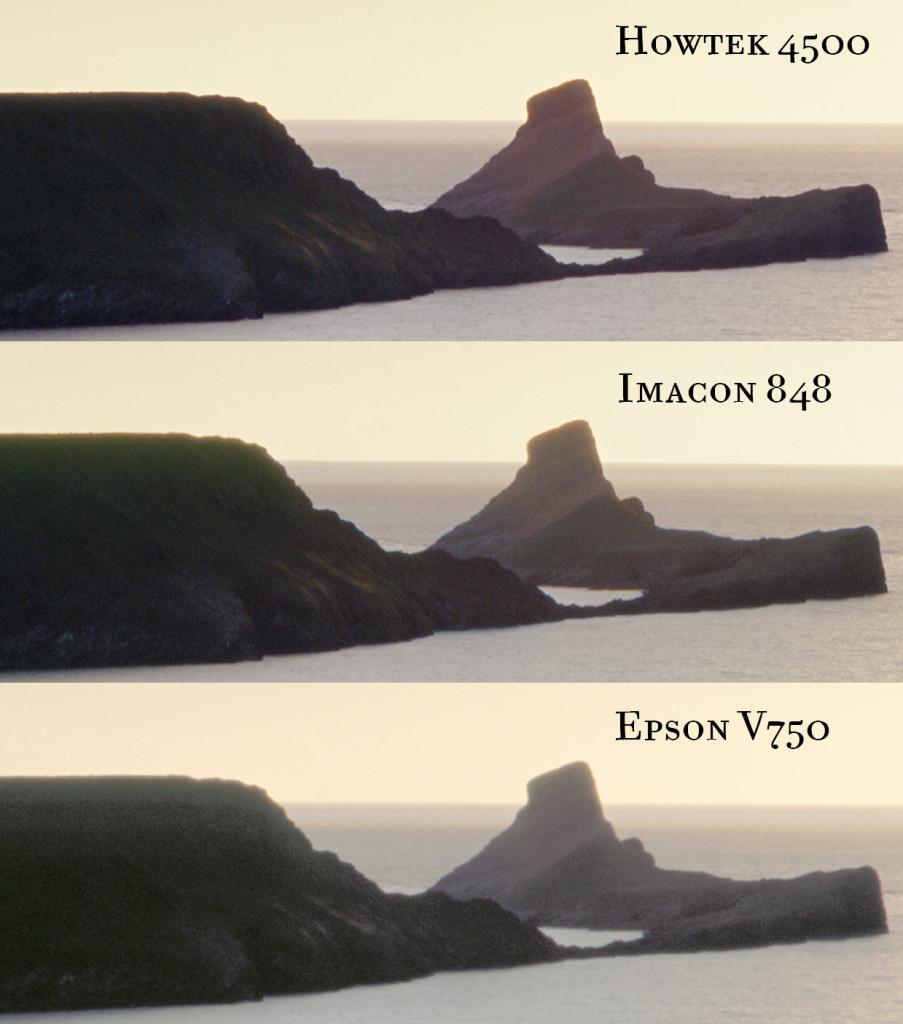
High Contrast Edges
Because most scanners use a ‘large’ light source, light inevitably bleeds from areas of light into the shadows. This results in glowing around light/dark boundaries, commonly known as halation. Even when this isn’t obvious, it can reduce contrast and hence perceived sharpness.
Drum scanners use a fine fibre optic light source illuminating a single pixel at a time (effectively masking all but the one pixel it is working on). This means that the process of making a high resolution scan can take over an hour at the highest resolution, but it also eliminated nearly all halation.
Here is an example comparison of the results from scanning a very high contrast Fuji Velvia 50 transparency on an Epson V750, an Imacon 848, a Howtek 4500 and a Heidelberg Primescan D8400.

